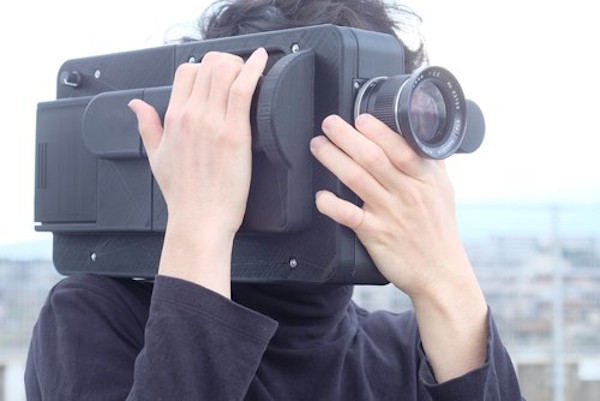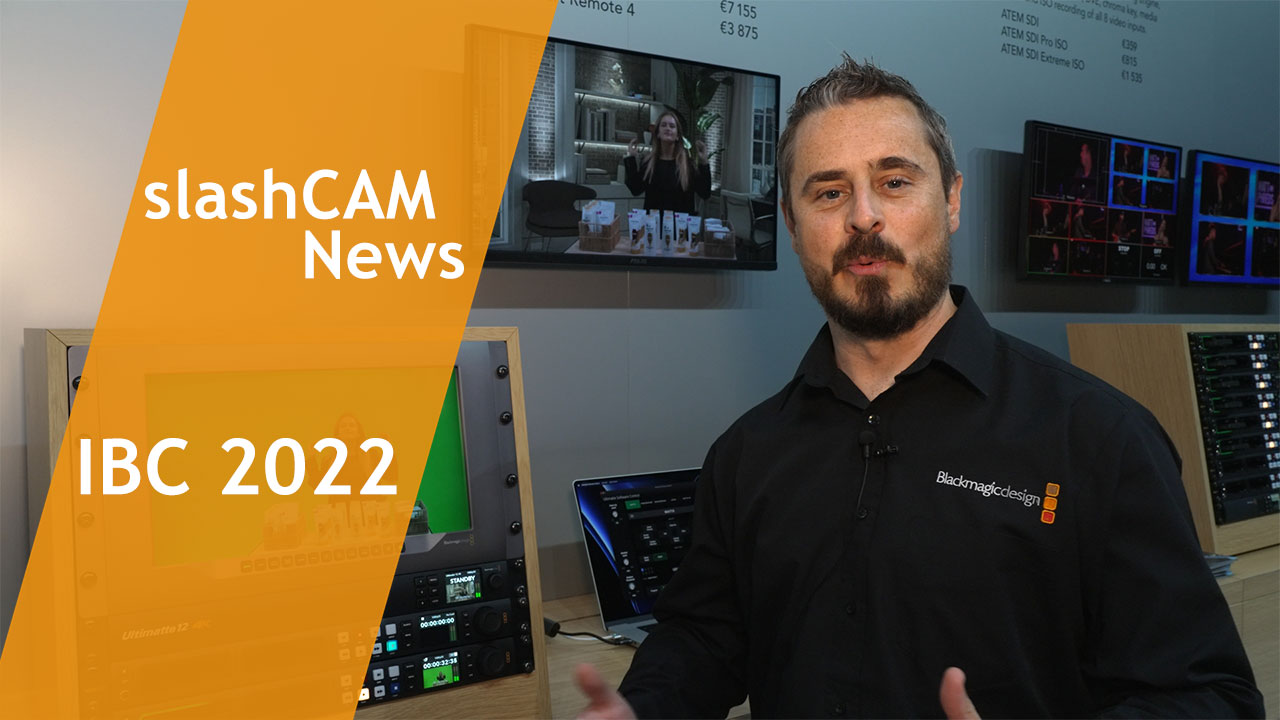[08:01 Fri,20.May 2022 by Thomas Richter] |
Engineer and designer Yuta Ikeya wanted to shoot with an analog 35mm camera, but he realized that it would be very expensive. The established Super 8 format offered no alternative for him due to its too low quality, so he decided to design and build an analog film camera compatible with standard 35mm photographic film.  However, an analog film camera has a much higher complexity than, for example, an equivalent photo camera because of the film transport mechanism and shutter required. After building several prototypes to test different mechanisms for intermittent film transport, he decided on a mechanically synchronized gear and cam mechanism driven by a single DC motor controlled by Arduino and recording at 18 frames per second.  The camera components produced by 3D printer. A half-mirror splits the light coming through the lens, and the camera uses a rotating shutter that allows the filmer to see the frame through the viewfinder in real time. This approach does reduce the amount of light reaching the film, but this can be compensated for by using higher ISO film.  The inner workings The camera, which resembles a VHS camcorder, is currently primarily a proof of concept and constructed almost entirely from 3D-printed parts. The 35mm photographic film used must first be spliced and then cut together to provide extended recording time and loaded into Ikeya&s own designed film and recording cartridge. However, using 35mm color negative film is still much less expensive than buying a large roll of 35mm film including processing. §PIC4$ The downside is that a cassette can only hold two rolls of film, which is just enough for 10 seconds of film. However, a higher film capacity via 3D printing would be relatively easy to make, for example by attaching a larger film cassette to the top of the camera. It also does not record sound, which must be recorded externally and then post-synchronized. The project has so far taken about 18 months from planning to prototype camera. In the future, Ikeya hopes to develop an improved version that records at the classic 24 frames per second or even allows for faster speeds. Other upgrades could include film stabilization, a better viewfinder, and a more compact design, among many others.  Unfortunately, Ikeya has yet to make any of his 3D models freely available online for others to print or even upgrade his camera. If you want to learn more about Ikeya&s cinema camera project, you can read a great Bild zur Newsmeldung:
deutsche Version dieser Seite: Selbstgebaut: Die 35mm Filmkamera aus dem 3D-Drucker |






